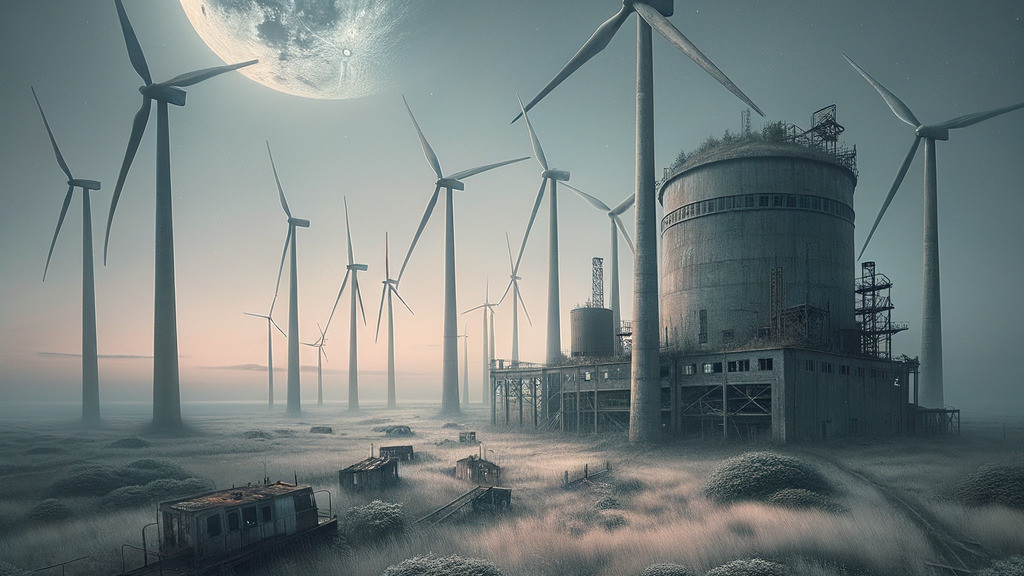Wind power generation has exploded over the last few decades! It's become a normal source of renewable energy across the world. What drove this growth? Heavy government subsidies. These made wind power able to compete with fossil fuels on price. But now, costs are going up and politics are shifting. Subsidies are ending in many places. This threatens to really slow down wind power's growth unless things change.
The Rise of Big Wind
Since the 2000s, worldwide wind power capacity has grown over 20 times! Major turbine upgrades let them make a lot more power. That helped lower costs a ton. Now in many markets, wind is almost as cheap as coal and natural gas. Tax credits, subsidies, and rules requiring renewable power made wind very appealing financially for power companies. Because of all this help, wind passed hydro to become the biggest renewable electricity source in the U.S. and Europe. China now leads in new wind installations globally.
When the Subsidies Stop Blowing
While costs have dropped, wind still can't compete without subsidies in most places against fossil fuels. Those have decades of infrastructure and don't pay environmental costs. But with high government debt, support is fading. The big U.S. production tax credit that aids over 60% of new projects ended in 2020 with no renewal. Germany and Spain are also cutting back subsidies after overpaying for renewables. Without incentives to level the playing field, building new wind farms is expected to slow way down.
Example: Brandenburg's Wind Energy Dilemma
Brandenburg has robust wind currents and has long been a centre of German wind power. Government subsidies have strongly boosted wind investments there, attracting local and international energy companies. These incentives supported building and running wind farms and researching new technologies. This helped Brandenburg become a wind power leader.
But big changes are coming. After 20 years, Germany is phasing out the subsidies. This threatens the economics of Brandenburg's wind farms. As support shrinks, the cost burden on operators rises.
Without subsidies, maintenance, staffing, infrastructure and other operating costs hit operators harder. Regular upkeep is essential for wind turbines to stay efficient. That means inspections, part replacements, and software updates. These costs could make some wind farms too expensive to run without subsidies.
In a notable development, the Brandenburg State Office for Monument Protection granted approval to classify two decommissioned wind turbines as technical monuments. These structures are now recognized as historical markers, representing the early stages of wind energy expansion in the region.
This designation not only preserves the turbines as part of Brandenburg's industrial heritage but also subtly addresses economic concerns, particularly for the operators. Typically, dismantling wind turbines incurs significant expenses.
By securing monument status, the operators effectively sidestep the financial burden of dismantling, as these structures will remain intact and be maintained as historical exhibits. This decision not only reflects a commitment to preserving the technological history but also presents a practical solution to the financial challenges posed by decommissioning old turbines.

Managing Choppy Political Winds
To sustain growth without the level of subsidies wind power has become reliant on, costs will need to fall further still through continued technology and manufacturing advances. Project developers are exploring ways to reduce costs through taller towers harnessing stronger winds, larger rotor diameters sweeping bigger areas, and more efficient power trains and control systems. Multi-MW turbines over 250 meters tall and rotors 120 meters wide are becoming commonplace, despite increasing setup complexities and transportation challenges. However, the scope for driving costs down solely through engineering improvements may have limits without supportive policies.
Final Thoughts
The Brandenburg wind power story shows a tricky situation. Early over-subsidizing led to unintended problems down the road. The subsidies were key to getting wind power going in the area. But now the long-term impacts of all that financial help are clear. Nobody planned for the costs of taking down old turbines or the environmental effects. Keeping broken turbines as monuments is creative, but really just a quick fix. It shows the lack of planning around the first subsidies.
The point of subsidizing renewables was to help move from fossil fuels in a sustainable way. True sustainability means considering the economic, environmental, and social angles. That includes what happens when renewable projects reach the end of life. Moving forward, policy frameworks need full plans for renewables' whole lifespan. That's to avoid leaving future generations with unsolved burdens. It's also key to really delivering on the promise of sustainability.






All comments are moderated before being published. Inappropriate or off-topic comments may not be approved.